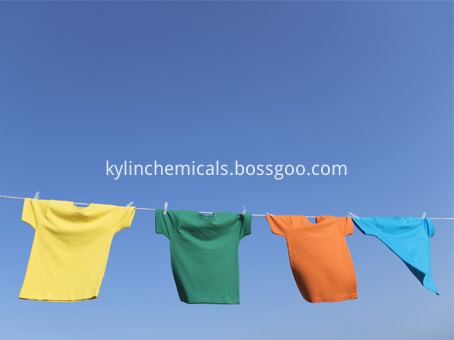Abstract On August 8th, a week ago, the head of the Trade Relief Bureau of the Ministry of Commerce made a statement on South Africa’s investigation into the safeguard measures for imported cold-rolled steel products. This is also the 27th talk of the head of the Trade Relief Bureau of the Ministry of Commerce on the issue of steel trade friction this year, and...
On August 8th, a week ago, the head of the Trade Relief Bureau of the Ministry of Commerce made a statement on South Africa’s investigation into the safeguard measures for imported cold rolled steel products. This is also the 27th talk of the head of the Trade Relief Bureau of the Ministry of Commerce on the issue of steel trade friction this year. The countries and regions involved, in addition to the traditional trade remedy investigation launched "big family", the United States and Europe, including India, Brazil, Vietnam, Malaysia, Australia, Germany and South Africa.
For a time, China's steel industry exports seem to have fallen into "four sides of the song." In the future, how can China's steel industry export road go? Where is the increment?
Export spring and trade winter
In 2015, China's steel exports reached 112.4 million tons, and its export volume broke through 100 million tons for the first time and reached a record high. It was accompanied by the winter of trade friction.
Data show that in 2015, China's steel products encountered 46 cases of trade remedy investigations, an increase of 19 cases over the same period of last year. It accounted for 46.9% of the total number of trade remedy investigations encountered in China throughout the year, and continues to be the industry most affected by trade remedy investigations. In 2014, among the total of 97 trade frictions, 27 were related to steel products, accounting for 27.84%, which has become the hardest hit area of ​​trade friction.
The increase in trade friction is not only reflected in the increase in the number of cases, but also in the deepening of the degree.
For example, in November last year, the nine steel associations of the United States and Europe jointly issued a statement accusing the Chinese steel industry of being the main influencer of the global steel industry suffering from overcapacity crisis. On this ground, the nine steel associations expressed their opposition to China's automatic access to market economy status on December 11 this year.
In May of this year, the US International Trade Commission (USITC) announced a 337 investigation into China's exports of carbon steel products to the United States, involving 40 Chinese steel companies and US branches. According to the investigation procedure, once the US has ruled that the company has violated the rules, the related products may be permanently banned from entering the US market.
Behind the hardships of China's steel industry is the choppy global steel trade environment. Some insiders pointed out that the surge in exports and trade protection have caused a significant increase in frictions in global steel trade.
In the “Top Ten Events of the Global Steel Industry†issued by the Metallurgical Industry Planning and Research Institute in 2014 and 2015, “steel trade friction increased significantly†and “global steel trade protection spread†continued to be on the list.
In the final ruling on the "double-reverse" investigation of imported corrosion-resistant boards issued by the US International Trade Commission in June, it was also found that the exporting countries involved in the double-reverse include India, Italy and South Korea.
According to the World Wide Web report, the president of the Japan Iron and Steel Federation, Kondo, said at the press conference in July that the global anti-dumping tax on steel products increased by 207, of which 31 were for Japanese products and 51 for Japanese products. .
Despite frequent trade frictions, China’s steel exports have a strong anti-“encirclement and suppression†momentum and have received “beautiful†transcripts.
After China's steel exports increased by 50.4% year-on-year in 2014, steel exports in 2015 increased by 19.9%. From January to July this year, steel exports were 67.41 million tons, an increase of 8.5%.
"In the context of the current global steel industry facing global overcapacity, the international steel market has become the buyer's market. It should be noted that the independent choice of the vast number of international users has contributed to the growth of China's steel exports." Li, President of the Metallurgical Industry Planning and Research Institute Xinchuang said at the "CMRC China Economic Watch" quarterly report on the 13th that the deeper reason for China's steel export growth is the substantial increase in the comprehensive competitiveness of China's steel industry. In fact, China's steel exports have a positive effect, not only meeting the practical needs of international downstream users, but also enhancing the competitiveness of the international steel market.
Li Xinchuang expects that in the next period, China's steel exports will remain at a high level for a long period of time, because this is the inherent law of the development of the world's steel industry, which is not transferred by either party's interests or unilateral will.
Export-to-production ratio is much lower than the world level
In the view of some trade experts, China is a real victim of trade disputes precisely because it does not encourage steel exports in terms of policy orientation.
Looking back at historical data, it can be found that China did not become a net exporter of steel until 2006. In terms of cumulative volume, China achieved a basic balance of cumulative and cumulative imports of steel in 2014, and has been a net importer of steel for half a century after the founding of New China.
From the perspective of the proportion of exports in production, the world average of steel exports and production ratio is 30%, while China's ratio is still less than 15%.
Assistant Minister of Commerce Zhang Wei stressed at the Brussels Steel Conference in April this year that China not only did not have any subsidized policies to stimulate steel exports, but also imposed export tariffs on certain varieties of steel products. At the same time, China also imports a large number of steel products, providing a broad market for global steel products.
“China’s steel production is mainly to meet domestic demand. China is the world’s largest steel producer and the largest steel consumer,†said Zheng Lixin, spokesperson for the Ministry of Industry and Information Technology.
In response to the “337 investigation†initiated by the US on Chinese steel companies, the heads of relevant departments of the National Development and Reform Commission responded on August 9 that the move was a repeated relief and abuse of trade restrictions was a serious damage to the normal steel trade order of the world.
Experts point the way to the steel industry to create incremental
The creation of increments has the Pareto improvement effect, which not only avoids pressure on the existing steel powers, but also brings about marginal interest improvements.
According to Lu Feng, a professor at Peking University's National Development Institute, in the current stage of global economic adjustment and relatively low steel demand, the creation of steel trade growth should be combined with developing countries to release potential demand through cooperation and development.
The cooperation between China and Pakistan is an example. In the nearly four years from 2011 to 2015, China’s steel exports to Pakistan increased from 370,000 tons to 2.56 million tons, an increase of nearly six times.
"In recent years, China-Pakistan steel trade is mainly an additional derivative of the 'One Belt, One Road' cooperation project, which will not only exert adjustment pressure on third countries, but may actually promote the reality and potential growth of the Pakistani economy through project implementation, and improve the marginal goods service to third countries. The demand has a win-win and win-win economic property." Lu Feng said.
In fact, China's growth in steel exports to countries along the “Belt and Road†and in developing countries in Africa reflects, to a certain extent, the characteristics of China's steel exports in recent years. The data shows that China's steel exports to the “Belt and Road†countries have increased from about 10 billion US dollars after the international financial crisis in 2009 to more than 30 billion US dollars in the past two years, and the proportion has also increased from 43% to 50%.
At the same time, the vast domestic market has great potential to be tapped. Lu Feng pointed out in the report "Let's look at steel - the world steel industry transfer and China's choice", the large-scale construction of urban modern underground pipe gallery system will release the potential demand for steel, and can appropriately raise the standard of steel for building construction and gradually Increase the proportion of steel structures.
The report also stated that it should be allowed to encourage steel companies to cross-ownership and cross-regional mergers and acquisitions, allowing excellent private enterprises to acquire state-owned enterprises and better utilize the vitality of private enterprises.
Kylin Chemicals manufactures & supplies high performance Acrylic dispersant polymers & thickeners, serves a variety of use in the following applications.
Detergents and Laundry
- Acrylic acid - Maleic acid copolymer, counterparts for BASF Sokalan CP45, Sokalan CP5, Sokalan CP7, Acusol 497N
- Acrylic acid homopolymer, counterparts for BASF Sokalan PA 25 CL, DOW Acusol 445, Acusol 445N

Cosmetics and Personal Care
- Cross-linked polyacrylate polymer, counterparts for Carbomer 934, Carbomer 940, Carbomer 941, Carbomer 980, Carbomer 981, Carbomer 1342, Carbomer 1382 and Carbomer 2020, etc.

Our advanced DCS manufacturing systems, advanced analytical instruments and quality systems assure the quality, stability and sustainability to your supply chain needs.
Acrylic Dispersant Polymers & Thickeners
Acrylic Dispersant Polymers,Acrylic Dispersant Thickeners,Ethylene Diamine Tetraacetic Acid,Kl Carbomer
Kylin Chemicals Co., Ltd. , http://www.kylin-chemicals.com